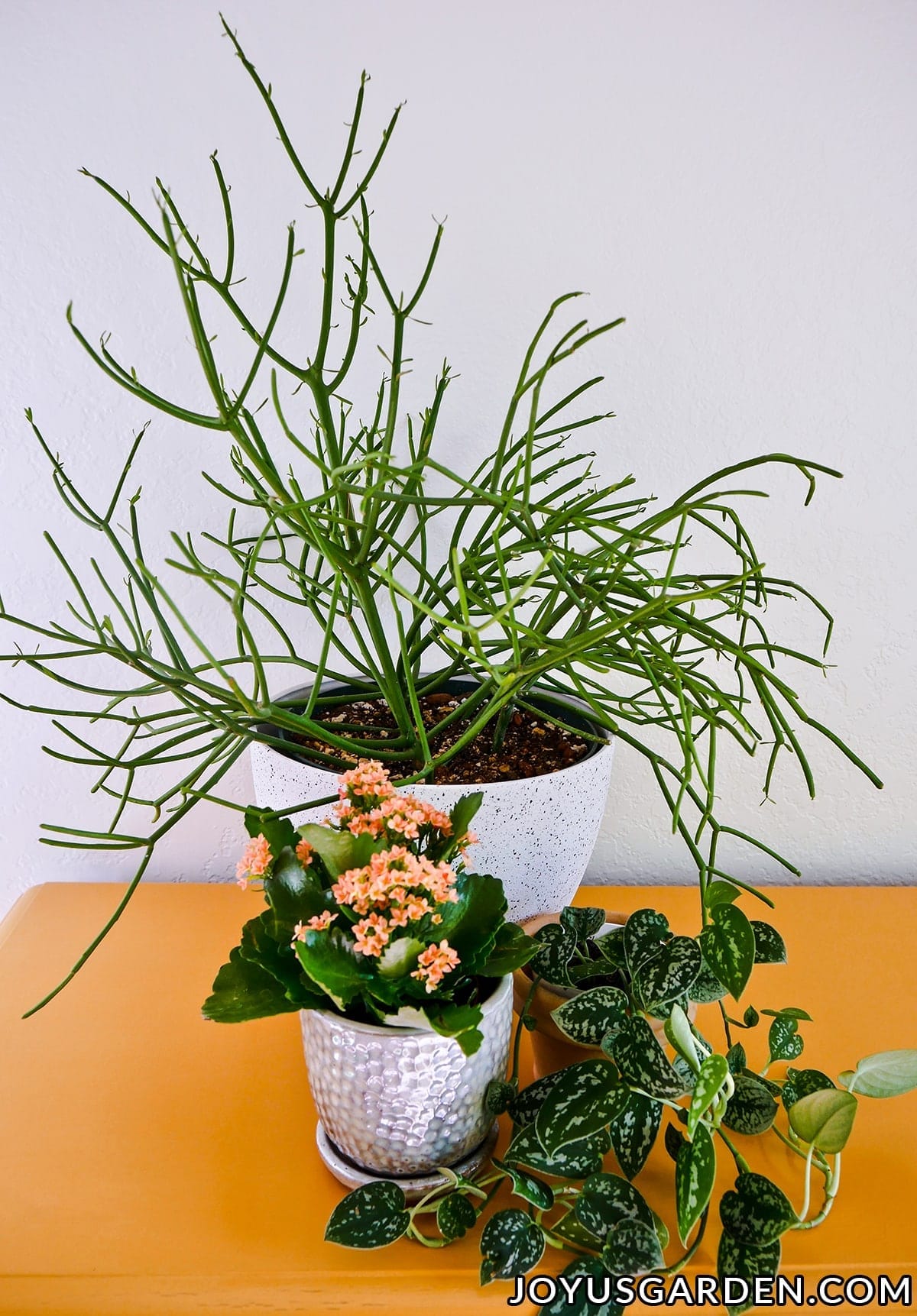Feeding houseplants naturally is both simple and rewarding. It promotes healthy growth and vibrant leaves.
Houseplants, like all living things, need proper nutrition to thrive. While commercial fertilizers are effective, they can also be harsh and expensive. Natural feeding options offer a sustainable and gentle alternative. These methods use everyday items found in most homes, reducing waste and benefiting your plants.
Plus, natural feeding can be safer for children and pets. In this blog post, we will explore various natural ways to nourish your houseplants. By the end, you’ll know several easy and effective methods to keep your plants healthy and green. Let’s dive in and discover how to give your houseplants the best natural care!

Credit: www.instructables.com
Choosing The Right Soil
Choosing the right soil for your houseplants is vital. Good soil provides the necessary nutrients and support for plant growth. It can determine the health and longevity of your plants. This section will guide you through different types of soil and nutrient-rich additives.
Types Of Soil
Different plants need different types of soil. Cacti and succulents thrive in sandy soil. It drains well and prevents root rot. On the other hand, ferns and tropical plants prefer peat-based soil. It retains moisture and supports lush growth. For most houseplants, a general-purpose potting mix works well. It’s light and airy, allowing roots to breathe.
Nutrient-rich Additives
Nutrient-rich additives can enhance your soil. Compost is a great additive. It adds organic matter and beneficial microbes. Worm castings are another option. They improve soil structure and nutrient content. You can also use bone meal. It provides a slow-release source of phosphorus. This helps with root development and flower production.
Other useful additives include perlite and vermiculite. Perlite improves soil drainage. Vermiculite helps with moisture retention. Both are lightweight and help keep the soil from compacting. By choosing the right soil and additives, you can ensure your houseplants thrive.
Using Compost
Feeding houseplants naturally can improve their growth and health. One effective method is using compost. Compost is rich in nutrients and can be easily made at home. Let’s explore some ways to use compost in your houseplant care routine.
Homemade Compost
Creating homemade compost is simple and cost-effective. Start by collecting kitchen scraps such as fruit peels, vegetable waste, and coffee grounds. Add yard waste like leaves, grass clippings, and small branches. Layer these materials in a compost bin or pile.
To speed up decomposition, turn the compost pile regularly. Ensure it stays moist but not too wet. After a few months, you will have rich, dark compost ready to use. This organic fertilizer will provide essential nutrients to your houseplants.
Compost Tea
Compost tea is another great way to nourish your houseplants. It is a liquid solution made from compost. To make compost tea, follow these steps:
- Fill a bucket with water.
- Add a small amount of compost to the water.
- Let the mixture steep for 24-48 hours.
- Stir the mixture occasionally.
- Strain the liquid to remove solid particles.
Once your compost tea is ready, use it to water your houseplants. This provides a quick nutrient boost. Compost tea can also be used as a foliar spray. Simply spray it on the leaves for added benefits.
Using compost and compost tea can significantly improve the health of your houseplants. These natural methods enrich the soil and promote strong growth. Try incorporating them into your plant care routine today.
Incorporating Organic Fertilizers
Feeding houseplants with organic fertilizers is a sustainable way to promote growth. Organic fertilizers offer natural nutrients. They enrich the soil without harsh chemicals. This section explores two popular organic fertilizers: bone meal and fish emulsion. These natural options can boost your plant’s health.
Bone Meal
Bone meal is a fine powder made from animal bones. It is rich in phosphorus, which helps plants grow strong roots. Bone meal also contains calcium, essential for plant cell walls.
To use bone meal:
- Sprinkle it on the soil surface.
- Mix it gently into the top few inches of soil.
- Water the plant to help the nutrients absorb.
Bone meal is slow-releasing. It provides a steady supply of nutrients over time. This makes it an excellent choice for long-term plant health.
Fish Emulsion
Fish emulsion is a liquid fertilizer made from fish waste. It is high in nitrogen, which helps plants develop lush foliage. Fish emulsion also contains trace minerals, promoting overall plant health.
To use fish emulsion:
- Mix the emulsion with water, following the package instructions.
- Apply the mixture directly to the soil around the plant base.
- Repeat every 2-3 weeks for best results.
Fish emulsion works quickly. Plants absorb it fast, showing rapid improvement. It is a great option for a quick nutrient boost.
Incorporating organic fertilizers like bone meal and fish emulsion can transform your houseplants. These natural products support healthy, vibrant growth. Your plants will thank you for the extra care.

Credit: www.plantsavvy.com
Utilizing Kitchen Scraps
Houseplants thrive on nutrients. Often, the best sources come from your kitchen. Utilizing kitchen scraps can provide a natural, cost-effective way to nourish your plants. This method reduces waste and enhances soil quality. Let’s explore some common kitchen scraps that can benefit your houseplants.
Banana Peels
Banana peels are rich in potassium. This mineral promotes strong root development. Cut the peels into small pieces. Bury them in the soil around your plants. Over time, the peels decompose. They release nutrients directly into the soil.
Coffee Grounds
Coffee grounds are another great kitchen scrap. They are rich in nitrogen. This helps in leafy growth. Sprinkle used coffee grounds on the soil surface. They also improve soil structure. Coffee grounds can deter pests. Make sure not to overdo it. Too much can make the soil acidic.
Creating Natural Pesticides
Houseplants can thrive with the right care. While there are many products available to keep them healthy, natural pesticides are a great alternative. These solutions are safe for your plants and the environment. Let’s explore two effective natural pesticide options: neem oil and garlic spray.
Neem Oil
Neem oil is an excellent natural pesticide. It comes from the seeds of the neem tree. This oil is known for its ability to kill pests and prevent their return.
- Mix 2 teaspoons of neem oil with 1 teaspoon of mild soap.
- Add this mixture to a quart of warm water.
- Pour the solution into a spray bottle.
- Spray the plant leaves thoroughly, including the undersides.
Use this solution weekly to keep pests at bay. Always test on a small part of the plant first. This ensures it does not harm your plant.
Garlic Spray
Garlic is not just for cooking. It is a powerful natural pesticide too. Garlic spray can repel many common pests.
- Crush 2 cloves of garlic.
- Add the crushed garlic to a quart of water.
- Let the mixture sit for 24 hours.
- Strain the mixture and pour it into a spray bottle.
Spray the garlic solution on your plants. Focus on areas where pests are visible. Repeat the process every few days for best results.
These natural pesticides are easy to make. They are safe for your houseplants and effective against pests. Give them a try and see the difference.
Watering Techniques
Feeding houseplants naturally involves more than just fertilizers. Proper watering techniques play a crucial role in plant health. Using the right water can make your plants thrive. Let’s explore some effective methods.
Rainwater Collection
Rainwater is a wonderful resource for houseplants. It’s free of chemicals found in tap water. Set up barrels or containers to collect rainwater. Place them under gutters or open spaces. Use this water to nourish your plants.
Self-watering Systems
Self-watering systems can save time and effort. These systems provide a steady water supply. They maintain soil moisture levels. You can buy self-watering pots or make your own. A simple setup uses a water reservoir and wicking material.
Maximizing Sunlight
Maximizing sunlight is crucial for healthy houseplants. Sunlight helps plants produce the energy they need to grow. Proper light ensures vibrant leaves and strong stems. Let’s explore how to make the most of sunlight for your indoor plants.
Optimal Placement
Position your houseplants near windows. East-facing windows provide gentle morning light. West-facing windows offer strong afternoon sun. Rotate your plants every few days. This helps all sides get light. Keep plants away from direct drafty areas.
Artificial Light Options
Natural sunlight isn’t always enough. Consider using artificial lights. LED grow lights are a good choice. They mimic natural sunlight. Place lights close to your plants. Follow the recommended hours of light exposure. Most plants need 12-16 hours of light daily.

Credit: www.joyusgarden.com
Pruning And Maintenance
Proper pruning and maintenance are crucial to the health of your houseplants. By giving attention to these tasks, you ensure that your plants remain vibrant and thriving. Let’s delve into the key aspects of pruning and maintaining houseplants.
Trimming Dead Leaves
Regularly trimming dead leaves is essential. Dead leaves can attract pests and diseases. Use a pair of clean, sharp scissors. Cut close to the base of the leaf but avoid damaging the main stem.
Here are some steps to follow:
- Inspect your plant weekly.
- Identify yellow or brown leaves.
- Trim these leaves carefully.
- Dispose of trimmed leaves properly.
By trimming dead leaves, you allow your plant to focus its energy on new growth.
Repotting Schedule
Maintaining a proper repotting schedule is vital. Over time, plants outgrow their pots. Repotting provides more space for roots and fresh soil nutrients. Generally, houseplants need repotting every 1-2 years.
Follow this simple guide:
| Plant Type | Repotting Frequency |
|---|---|
| Small Plants | Every 1 year |
| Medium Plants | Every 1-2 years |
| Large Plants | Every 2-3 years |
Choose a pot that is one size larger than the current pot. Ensure the new pot has proper drainage holes. Gently remove the plant from its old pot, shake off excess soil, and place it in the new pot with fresh soil.
By sticking to a repotting schedule, your plants will have the space they need to grow healthy and strong.
Frequently Asked Questions
How Do I Naturally Feed Houseplants?
Use compost tea, banana peels, or eggshells to enrich soil. These natural fertilizers provide essential nutrients.
Can Coffee Grounds Be Used For Houseplants?
Yes, coffee grounds add nitrogen to the soil. They improve soil drainage and aeration.
What Household Items Can Feed Houseplants?
Banana peels, eggshells, and used tea bags are great. They provide essential nutrients.
How Often Should I Use Natural Fertilizers?
Apply natural fertilizers every 4-6 weeks. This ensures consistent nutrient supply for healthy plant growth.
Conclusion
Caring for houseplants naturally keeps them healthy and vibrant. Simple ingredients work wonders. Compost, eggshells, and banana peels provide essential nutrients. Regular watering and sunlight also help. Avoid chemicals for a greener home. Healthy plants bring joy and beauty. Start with these tips today.
Your plants will thrive. Enjoy the benefits of a natural approach. Happy gardening!


